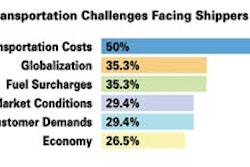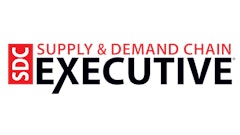By Louis Columbus
In the face of economic uncertainty, the inherently unquantifiable areas of a company get a higher level of attention than ever before. The center of attention for many companies today is the integration of marketing strategies and programs to supply chain planning, management and optimization. The extent to which marketing and supply chain management teams are synchronizing their plans together is directly proportional to the ROI both attain together to create a customer-driven supply chain. This has to go beyond collaborative forecasting, planning and replenishment (CPFR) and encompass supply chain management as part of the new product development and introduction (NPDI) process. Companies taking this approach must define dashboards and scorecards that go beyond just measuring their own activity and contributions. To drive the greatest value, companies must instead focus on measuring the accuracy, speed and permanency of change they bring to each other through collaboration.
The Perfect Order as a Barometer of Customer Expectations
The Perfect Order Index (POI) is one metric that captures the effects of collaboration on supply chain execution and fulfillment. What's needed are links to the four main components of the POI that measure how effective demand generation strategies in general — and marketing specifically — are in ensuring on-time, complete, damage-free orders that have been accurately invoiced. At first glance many would argue that the four metrics that comprise the POI — (on-time delivery percentage) x (percentage of orders shipped complete) x (damage-free order percentage) x (accurate invoicing) — are only relevant within supply chains.
Figure 1: Defining the Perfect Order Index
In fact, all forms of demand generation strategies have a direct effect on these measures, because the initial market direction and expectations created by a company through its marketing and selling strategies define, in customers' minds, the minimum level of performance of each of these measures. Perceptions don't lend themselves well to the metrics that drive POI calculations, yet they are just as, if not more, powerful. Consider the launch of the Apple iPhone to see how the perception of perfect order performance affects the calculation of the POI for a new product that relies on a significantly different supply chain. Apple and its intensely loyal customer base have very high expectations that any new product will be intuitively designed, cool in ergonomics and navigation, and, most of all, integrated. Apple has also created the expectation over the years of having their products come out of the box and work immediately. All these factors together set the POI bar very high for Apple, and having demand generation be an integral part of supply chain planning, management and fulfillment was critical for the launch of the product.
Customers don't think in terms of POI scores, but, given the chance, they definitely can quantify their expectations of a company's performance. At the intersection of customer expectations, demand generation strategies that create expectations, and supply chains and fulfillment delivering on them, is the customer's perception of performance. Demand generation, supply chain performance, fulfillment and customers' expectations all are interlinked. Given the pervasive adoption of Web 2.0 technologies, it's possible to overlap POI data on a per product basis to customers' attitudinal scores, creating a barometer of how effectively a company is meeting or exceeding their customers' expectations. In the vernacular of Web 2.0, this would be called a "mash-up," combining structured financial data with unstructured attitudinal data captured through surveys or through comments from customers analyzed through text mining, for example. Forward-thinking companies could actually "trend line" this and see the effects of bringing supply chain planning, management and fulfillment into the new product development and introduction (NPDI) process over time. The goal of having a metric for the impact of collaboration and synchronization between demand generation strategies and supply chain performance would be achieved. Taking this one step further, publishing these measures of performance for customers to see would bring entirely new levels of accountability and collaboration into any company's daily culture and no doubt bring collaborative efforts to the forefront of any project.
Driving Up Lifetime Customer Value in Tough Economic Times
The saying "no one ever cost-reduced their way to market leadership" takes on an entirely new meaning given the current economic uncertainty, which has led many companies to cut back on investments in integrating demand generation and supply chains, production and fulfillment with each other. Arguably, the level of sales a company attains is driven by the continual meeting and exceeding of customers' expectations, and so it is essential that supply chain and demand generation continue to be synchronized for a company to continue growing. As customers' expectations are the future of any company, it's critical to keep demand generation and supply chain, production and fulfillment integrated together.
It's extremely difficult, however, for companies in the middle of tough economic times to look at becoming demand-driven or, once committed to this strategy, to remain on the path to its fulfillment. Measuring the total cost of ownership (TCO) for supply chains that don't invest in becoming demand-driven is like only measuring half the factors that go into calculating perfect order performance. It simply does not make sense and is short-term in result. Cost-reduce any series of systems and processes long enough and there will be a positive ROI and low TCO, yet the far greater and quantifiable gains of exceeding customers' expectations through exceptional performance have a far greater financial impact. When the ability to consistently meet or exceed customers' expectations are taken into account as part of perfect order performance, the ROI and TCO of demand-driven supply chains shift from cost reduction to top-line revenue growth. Instead of worrying about the pennies saved by not connecting one process or system to another, the concern needs to be how to bring in more dollars using demand generation and fueling new business growth.
Taking Steps on the Demand-driven Journey
With so much pressure within companies to reduce costs it's important to get started on a pilot project that quickly shows the positive impact of making supply chain planning and management more demand-driven. Product introductions, product line extensions, the launch of a new service, channel management strategy or on-boarding a new channel partner all are events that companies have used to rationalize investments in becoming demand-driven. For manufacturers of complex products who have build-to-order strategies, being demand-driven is a necessity. Of all selling strategies, build-to-order most influences the POI score of a manufacturer because it directly influences both the percentage of "shipped complete" orders and the percentage shipped damage free. Optimizing order capture systems to make sure a customized order is taken right the first time not only saves time for production planners, it may surpass customers' expectations as well. One globally recognized truck manufacturer known for its customized industrial truck designs takes, on average, seven iterations of an order to get it accurately entered. It's doubtful the customer expects several phone calls to get the order right, yet it's a certainty they expect the truck configured to their requirements, delivered on the date promised on the quote. This example sets the foundation for the steps needed in making the demand-driven journey:
- 1. Get outside your company and see how your supply chain is changing customers' expectations. It's too easy to become complacent not notice how supply chains are out of sync with all aspects of being demand-driven, from the initial expectations of customers to the fulfillment of customized product orders. There are many ways of doing this, but don't outsource it to a research firm. The bottom line of this exercise is to see whether all the expectations that demand-driven strategies create are actually being fulfilled or not through the integration of supply chain, manufacturing and fulfillment. It's a good idea to get a sense of your POI score at this point to see improvements over time as well as to perfect order performance.
- 2. Take the lessons learned from your experience in step one and integrate people, processes and systems together to start making supply chain planning and management more demand-driven. Get customer-facing processes integrated back to supply chain planning and management. Redefine processes as part of a pilot in this phase, and measure the impact on the specific areas' POI score. This is a great way to see how changing customer-facing processes affects perfect order performance.
- 3. Taking the lessons learned from the pilot, define a plan for integrating all customer-facing processes to supply chain planning and management systems. There are many aspects of this last step, the most challenging being to get people to change how they do their jobs in the demand generation, supply chain planning, management, manufacturing, fulfillment and services areas of the company. You also must look at how to bridge the gap between demand-driven initiatives and strategies, on the one hand, and supply chain planning, management and production, on the other, perhaps with an automated solution.
Lessons Learned
The perfect order isn't just for supply chains anymore. When one considers the impact it has on customer expectations and its utility as a barometer of how well a company is fulfilling those expectations, it forces the issue of how demand-driven a supply chain really is. As the future of any company depends on meetings its customers' expectations, it's also important to not try to cost reduce operations so that high ROI measures are achieved at the expense of being able to fulfill orders accurately, completely, on time and with no damage. Creating pilot projects to see how becoming demand-driven in just a single area affects perfect order performance is the approach many companies are taking, gradually expanding into all customer-facing channels and processes over time. Even in tough economic times, investing in becoming demand-driven has the potential of bringing in top-line revenue growth and permanently changing a company's ability to compete for new business.
About the Author: Louis Columbus is senior manager, enterprise at Cincom Systems, a developer of software for business operations and customer communications. Previously Columbus held senior management positions with Gateway, Ingram Micro and a software start-up. He also served as a senior analyst at AMR Research. His most recent book is Getting Results From Your Analyst Relations Strategies. He can be reached at [email protected].



















